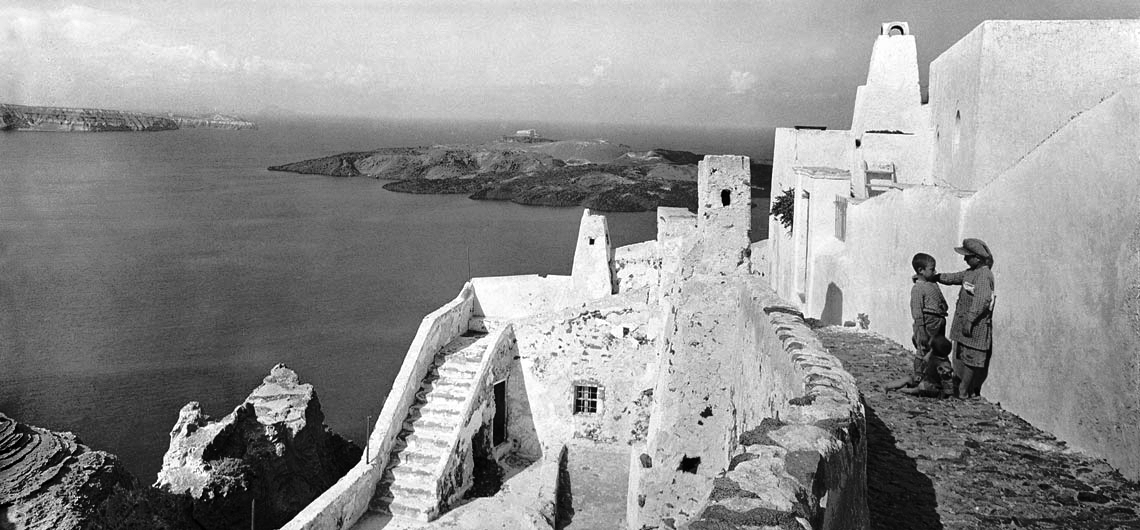About 100 years ago, Greek photographer Elli Souyioultzoglou-Seraidari (1899-1998), –better known by her professional name of Nelly’s, visited Santorini (Thira) and captured the island’s daily life and landscapes through her camera lens. Her black-and-white photographs reveal the uniqueness of the Aegean landscape, skillfully playing with light, shadow and the geometry of volumes. From approximately 200 glass negatives that Nelly’s captured during her regular summer visits to the island (1928-1932), 40 themes were selected and are now presented as contemporary digital prints at the exhibition “Nelly’s: Santorini between the Wars” at the Kastelana Photography Centre in the medieval village of Pyrgos (cover pohoto: Nelly’s, Santorini 1928-1932 ©Benaki Museum/Photographic Archives).
The exhibition is co-organized by the Benaki Museum and the Kastelana Photography Centre, under the auspices of the Municipality of Thira and is part of the initiative “Santorini 2025: Year of Promotion and Support of Authenticity“, aiming to emphasize the island’s unique cultural identity and sustainable future.
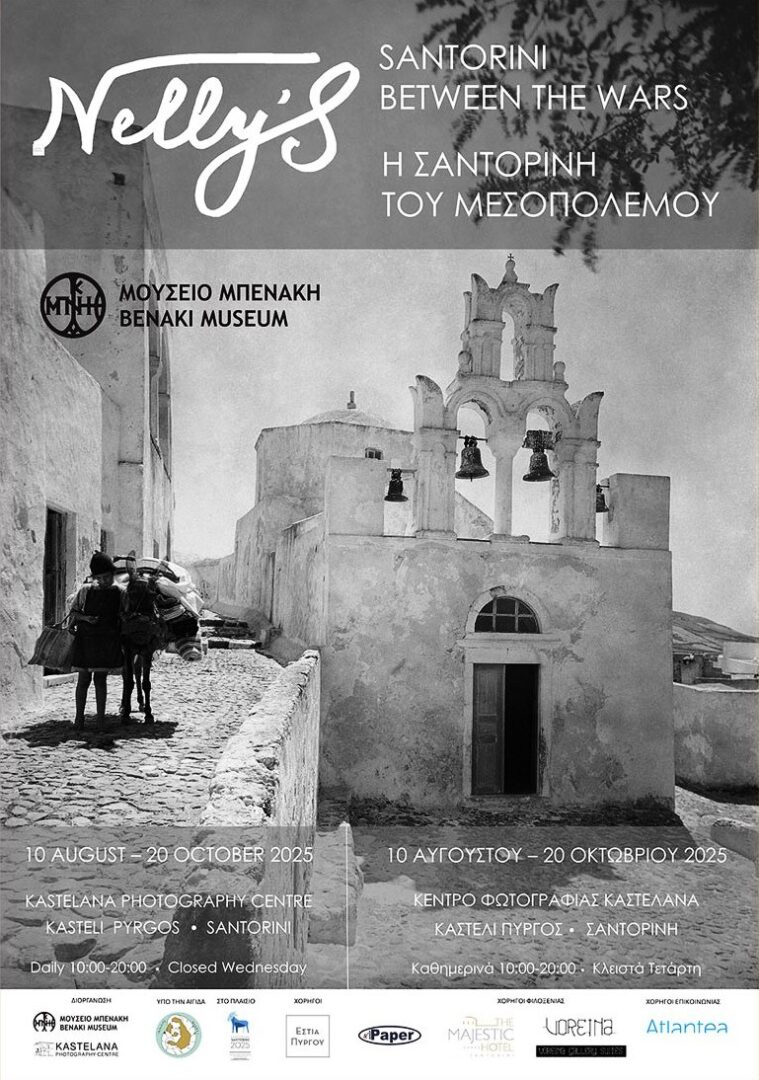
The exhibition “Nelly’s: Santorini between the Wars” is curated by Aliki Tsirigialou, Head of the Benaki Museum Photographic Archives, and Tonia Noussia, Architect – Museologist, Founder of the Kastelana Photography Centre. Almost a hundred years later, Nelly’s images return to their birthplace creating a dialogue with the changed space of today’s Santorini.
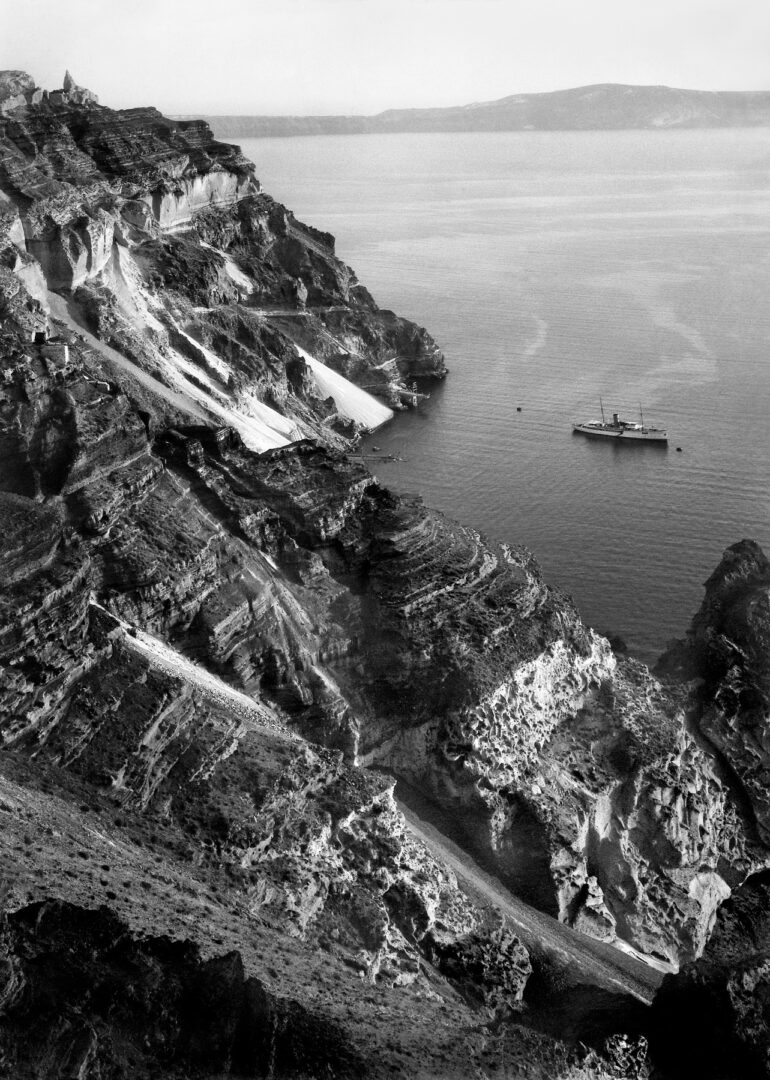
Nelly’s, Santorini 1928-1932 ©Benaki Museum / Photographic Archives
Nelly’s visited Thera for the first time in the summer of 1928, at the urging of her sister Maro Sougioultzoglou and her Santorinian husband Spyridon A. Malaspina. The steep volcanic landscape and the island’s unique architecture immediately attracted her interest. The dark shades of lava and the deep blue of the sea are harmoniously balanced, in tones of white and black, with the dazzling Aegean light as it reflects on the surface of houses. The curves outlined by the shadows on the buildings, the arches in the picturesque streets, the domes of the churches, but also the morphology of the terrain itself, are made manifest in her compositions. The human presence is discreet, so much so that the island seems deserted. The few elderly women and children who appear in her photographs have been placed deliberately, serving her iconographic style. (Source: Benaki Museum, Kastelana Photography Centre)
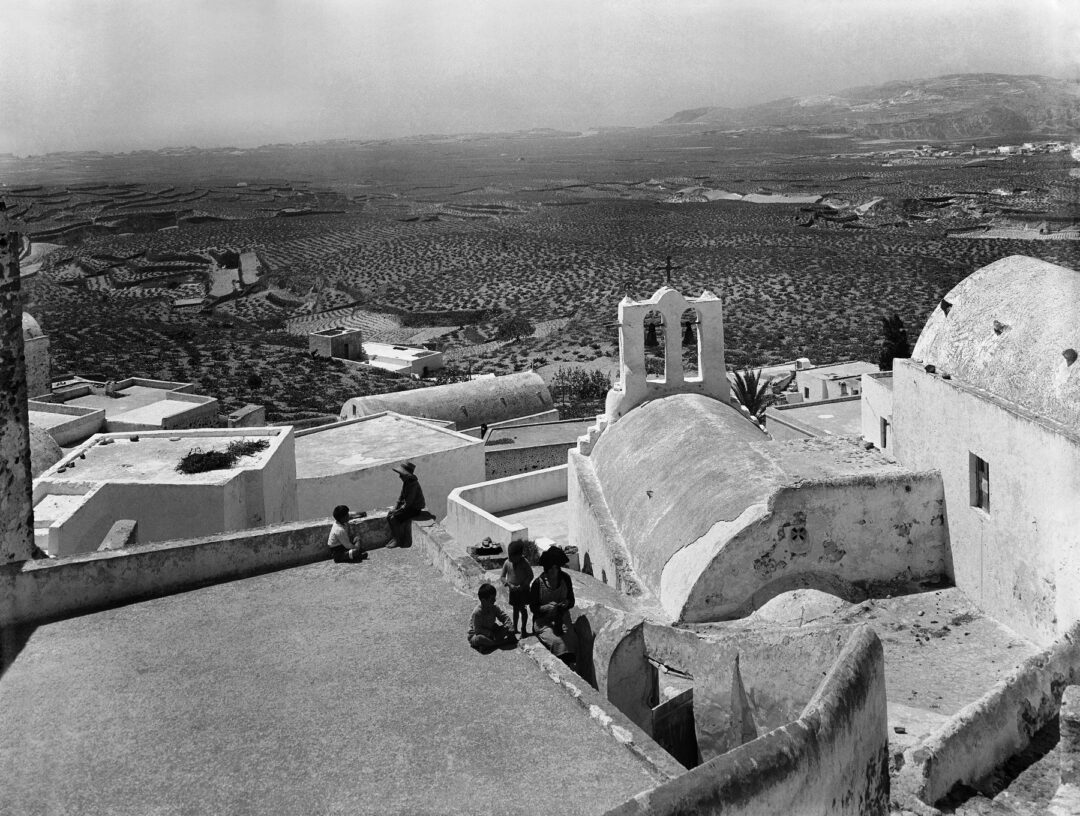
Nelly’s, Santorini 1928-1932 ©Benaki Museum / Photographic Archives
From the medieval settlement of Pyrgos where the family stayed at the time, Nelly’s toured the island, camera in hand. She walked along the cliffs of caldera, highlighting the awe-inspiring volcanic landscape. She stood in front of Skaros Rock in Imerovigli, capturing the vertical layers of the rocks with the texture and colors of the geological formations. She walked on the black sand beach of Kamari and observed the fluid continuity of land and sea. She followed the path to Mount Profitis Ilias and captured the expanse and vastness of the landscape, and she also wandered the cobbled streets of Pyrgos and Fira, where she recorded the life of human presence and absence.
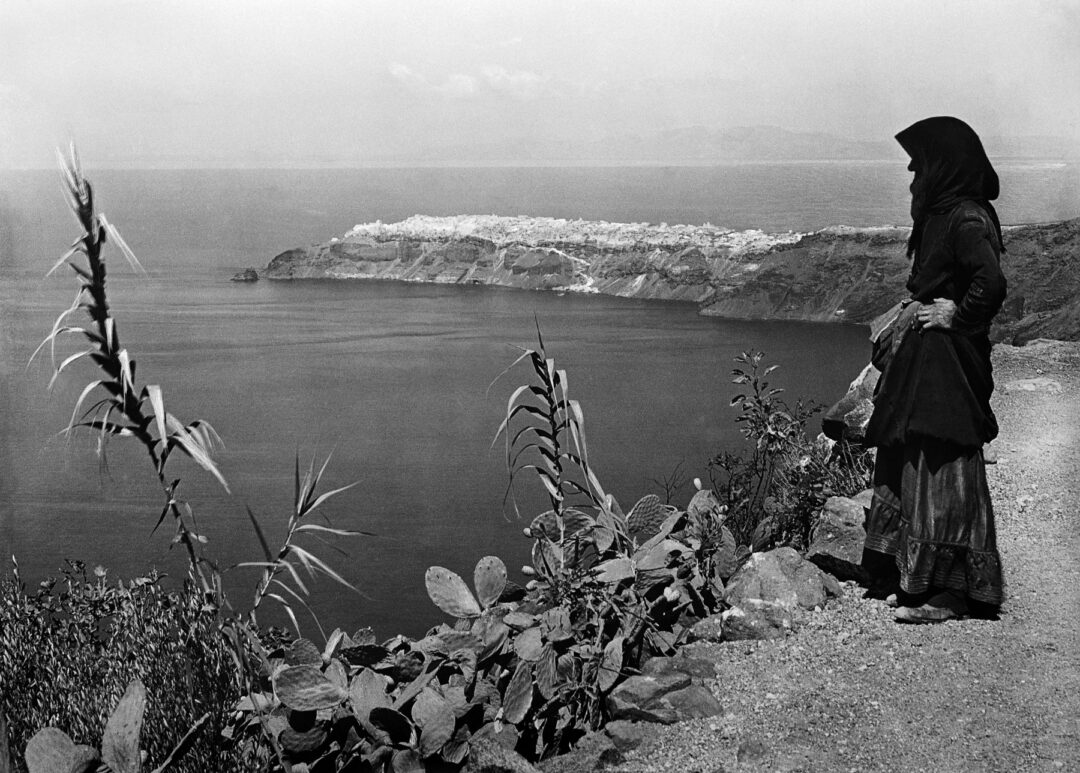
Nelly’s, Santorini 1928-1932 ©Benaki Museum / Photographic Archives
It is noteworthy that Nelly’s visit to Santorini coincided with the discovery of Cycladic architecture by the pioneers of modernism. The charm of the island landscape that influenced Le Corbusier and other important architects of the time was captured in a unique way by Nelly’s lens, creating a valuable testimony to the evolution of aesthetic perception in the 20th century. Unlike her contemporary European photographers such as Herbert List or Henri Cartier-Bresson, who sought the “exotic” element in Greek landscapes, Nelly’s approached the place with a deep understanding of its cultural identity. (Source: Benaki Museum, Kastelana Photography Centre)
In the summer of 1956, a major earthquake in the region of Amorgos struck the island of Santorini, causing significant damage to houses and infrastructure. We owe much of our knowledge of the island’s pre-earthquake appearance to its extensive recording by Nelly’s.
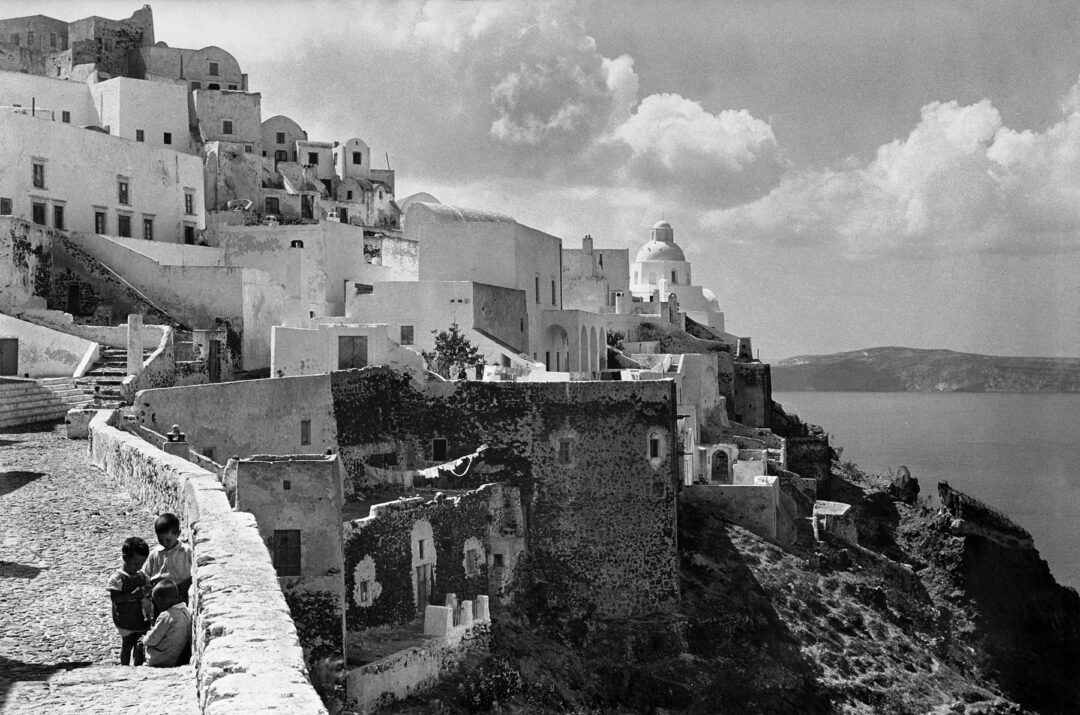
Nelly’s, Santorini 1928-1932 ©Benaki Museum / Photographic Archives
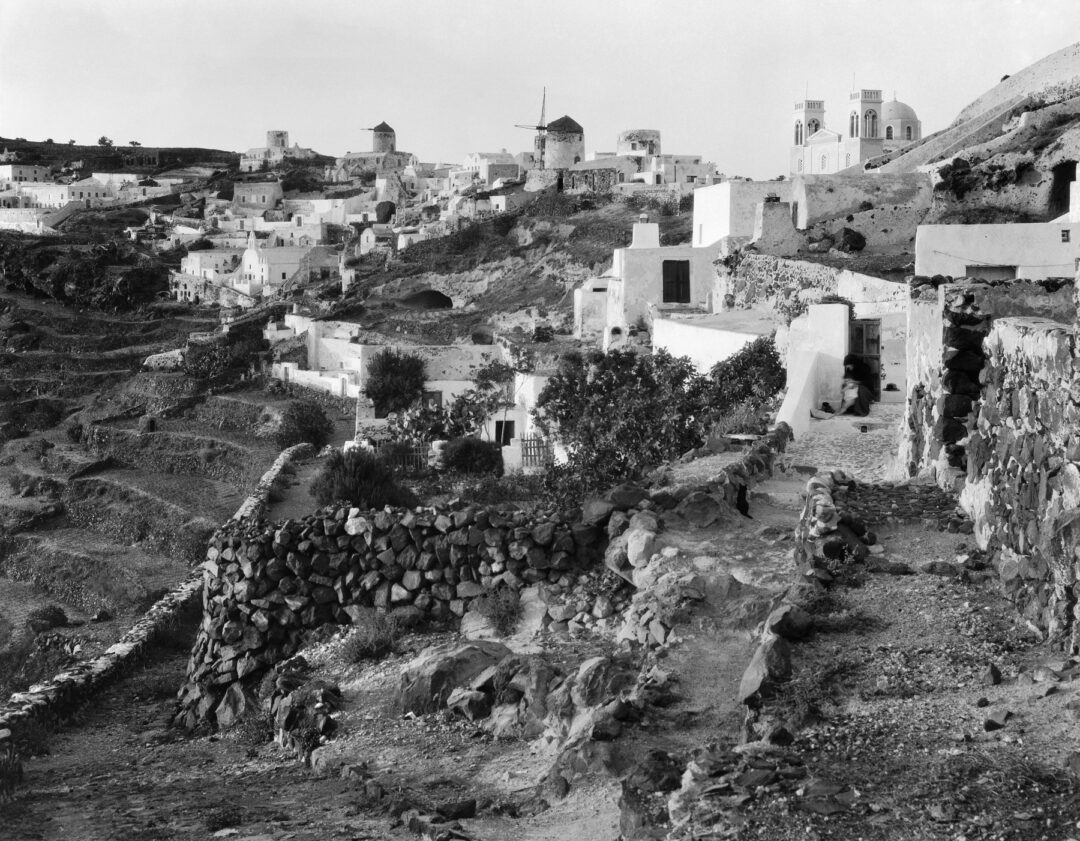
Nelly’s, Santorini 1928-1932 ©Benaki Museum / Photographic Archives
Nelly’s (1899–1998), was a pioneering Greek photographer originally from Asia Minor. Influenced early on by German photographic masters, she developed a classical aesthetic marked by freedom and movement. After establishing her studio in Athens in 1924, she focused on Greek subjects, capturing portraits of interwar Athenian society and Greek immigrants in the USA. Between 1927 and World War II, Nelly’s traveled extensively across Greece, documenting its people, landscapes, and ancient monuments, helping shape Greece’s visual identity in tourism. Known for her innovative use of natural light and thematic cohesion, she later worked in the USA, expanding into advertising and street photography. Nelly’s legacy remains influential for both its artistic quality and cultural significance.
In 1984, Nelly’s donated her entire archive, comprising over 50,000 negatives and 20,000 original prints, to the Benaki Museum Photographic Archives, contributing significantly to the preservation and dissemination of Greek photographic heritage.
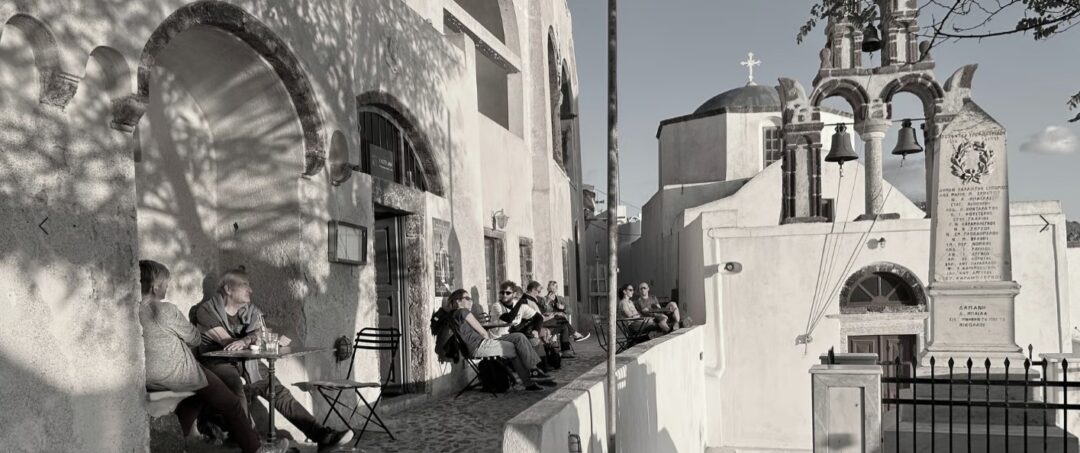
Kastelana is a Photography Centre housed in a three storey listed building, part of the original gateway into Kasteli, Pyrgos medieval fortification. The aim of the Centre is to host photography exhibitions from contemporary or archival sources as well as giving the opportunity to visiting artists to show their work to the public. The administration and care of the collection of photographs by Antonis Lagadas is also one of the primary aims of the Centre.
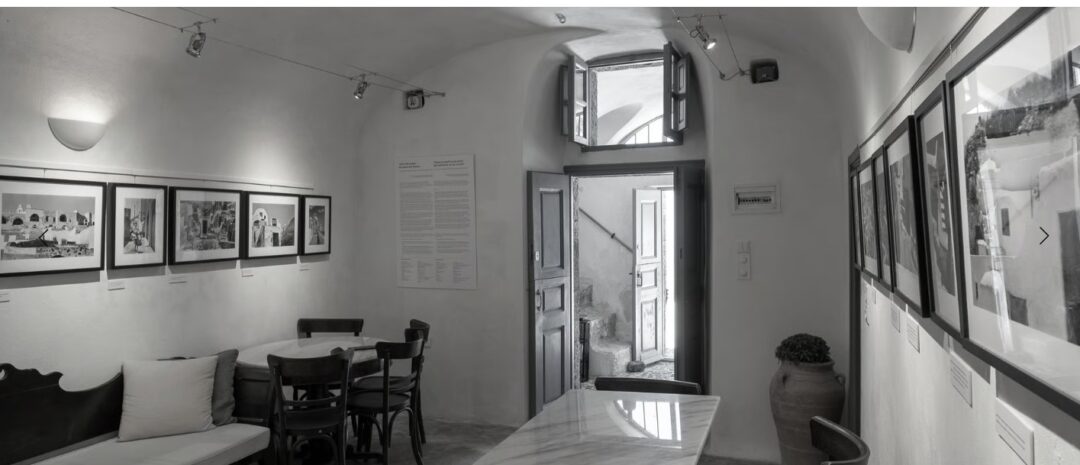
The interior of the space remains unaltered over many centuries and together with the original furniture provides a setting for the appreciation of a typical house within the fortification, while the outside offers stunning views of the island. At the ground floor café, visitors can enjoy a range of Santorini gastronomic specialties.
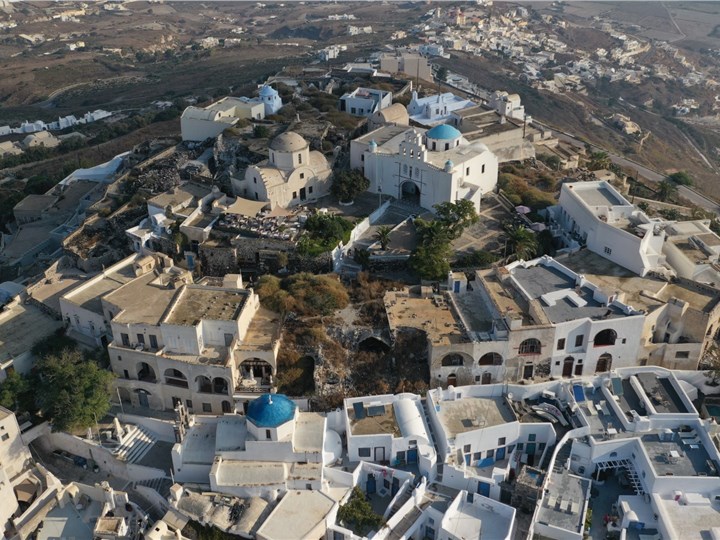
Panoramic view of Pyrgos Kasteli (Castle) (Photo: santorini-view.com). It was one of the five castles built by the Venetians in the 15th century (the other ones were those of Akrotiri, Skaros, Aghios Nikolaos in Oia and Emporio). It followed the style of a settlement fortification with a subsequent yard: around the core, in the centre of which there was a tower initially and a church at a later stage, a fortification yard was later developed, consisting of the external walls of the houses. In its centre stood the small square with the churches of Panagia and Aghios Georgios. Around the square, four more residential pockets were developed, while the (now demolished) public bakery stood to the north. (Source: santorinipyrgos.com)
The medieval village of Pyrgos is 7.5 km to the east of Fira and recently, it has become a significant attraction of the island. Built at the foot of Mesa Vouno, it is one of the most beautiful settlements of Santorini and stands out from a distance along many of the routes visitors can follow. In 1995, Pyrgos was declared a “preserved monument” by UNESCO.
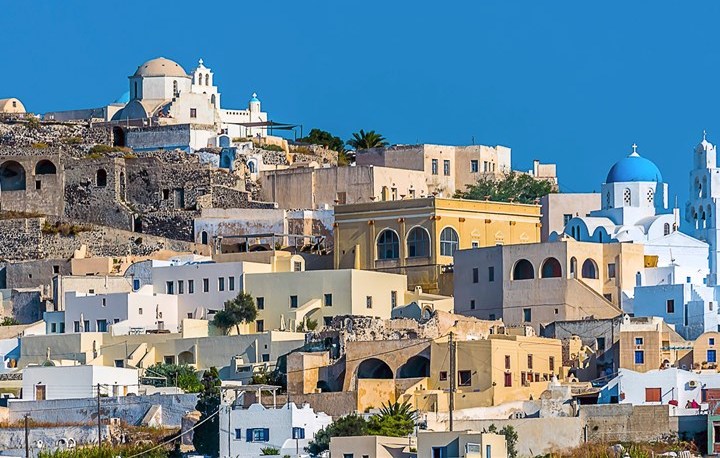
The visitor steps back in time wandering through the charming paths of Kasteli in Pyrgos (Photo: santorini-view.com).
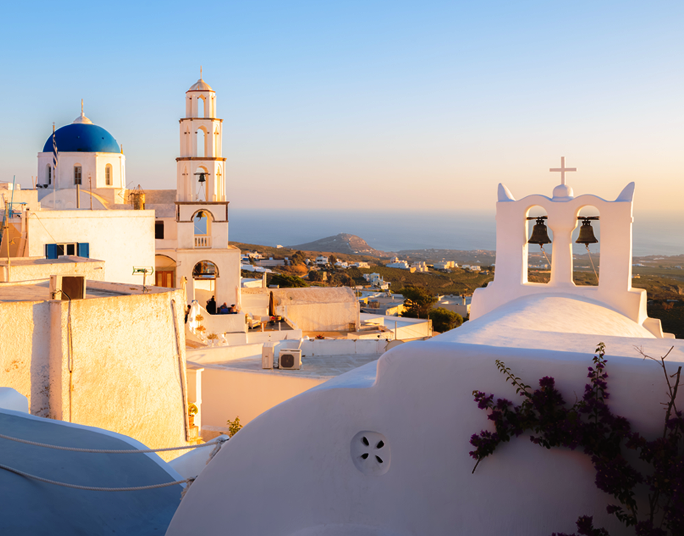
Dozens of visitors come every day at Pyrgos, surrounded by whitewashed churches and vineyards with their typical Santorinian vines (Photo: santorini.gr). They go up to the castle, explore the cobbled streets with the Cycladic and the neoclassical buildings, many of which have been rebuilt, drink coffee or soft drinks at coffee shops, enjoy their lunch or dinner at the settlement’s restaurants and taverns, see the sunset over the caldera at the top of the castle or on the terraces of the winery of the island’s Wine Producers Association, visit the museum of Aghia Triada, and do their shopping at the village’s shops. (Source: santorinipyrgos.com)
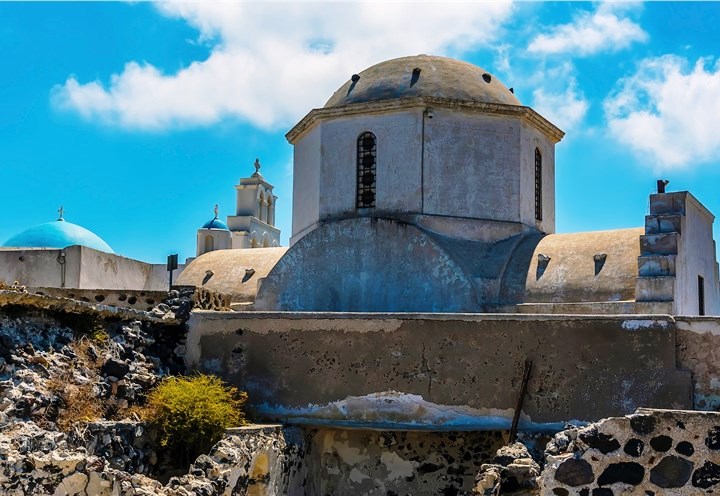
Timeless architecture and rugged beauty, exploring the historic Pyrgos Kasteli (Photo: santorini-view.com)
Santorini 2025: Year of Promotion and Support of Authenticity
Read more:
Idyllic interwar Crete through Thalia Kalligianni’s naïve art and Nelly’s camera
Greek Seas: A photographic journey in time
The archaeological site of Akrotiri on Santorini | The Pompeii of the Aegean
Art meets Tourism in Santorini
Santorini’s Atlantis Books Tops National Geographic’s List
Cherry Tomato: A Lavish Product Made in Santorini
I.A.
TAGS: AEGEAN | ARTS | CYCLADES | PHOTOGRAPHY | TOURISM

